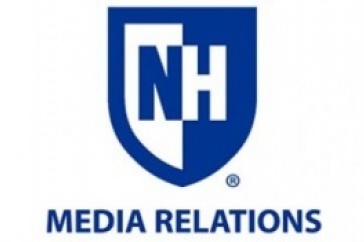UNH Research Finds Well Water Risks More Detectable During Warmer Weather

DURHAM, N.H.—Over 44 million people in the United States depend on private drinking water wells that are not federally regulated. Researchers at the University of New Hampshire and collaborating institutions found that current monitoring practices do not accurately reflect groundwater pollution risks because spikes in harmful bacteria, like those from animal and human waste, vary depending on the season—with highest levels observed from testing conducted in summer months when temperatures are over 90°F.
“This is concerning because many residents and homeowners across the country, including here in the Northeast, have been found to test their wells in colder months which can cause a false sense of security and underestimate the true threat of harmful bacteria in their drinking water,” said Ranjit Bawa, visiting assistant professor of natural resources and the environment at the University of New Hampshire and a study co-author.
In the study, published in the journal Science of the Total Environment, researchers looked at year-round water samples from nearly 50,000 wells across the state of North Carolina between 2013 to 2018. They were able to document a significant gap in the timing of when private wells were sampled and when they were likely to become contaminated. Because communities without access to public water infrastructure tend to be located near industrial and agricultural sources of pollution, the researchers focused on wells located near hog farm lagoons to look for spikes in bacteria levels like fecal coliform and Escherichia coli (E. coli). They documented that the highest levels of bacteria were found during the summer months when temperatures exceeded 90°F. The lowest levels of contamination were found from samples taken in February and March. No clear connection to bacterial detection was indicated due to rainfall, only with increased air temperature. Other possible variables and contaminants, like failing septic systems, poultry operations, coal ash impoundments, hazardous waste sites and dry-cleaning solvent sites, were examined and did not relate to the seasonal spikes in total coliform and E. coli.
“Our findings underscore the need to refine federal guidelines that would not only recommend once-a-year testing for bacteria in private wells but also offer more guidance on seasonal timing,” said Jacob Hochard, Knobloch assistant professor of conservation economics at the University of Wyoming and lead author.
Researchers say the study has implications for national and global water sources, especially those with potential for contamination from nearby surface sources of human and animal waste, such as manure applications and leaching septic systems. They stress that closing the gap between perceived and actual risks of drinking water contamination could help to improve public health, most notably for rural and underserved populations that depend on well water. In the long-term, such directed private well monitoring could also increase the feasibility of predicting environmental exposures in sparsely populated areas that are otherwise costly to monitor.
Other co-authors include Nino Abashidze, University of Wyoming; Randall Etheridge, East Carolina University; Yuanhao Li, Norwegian School of Economics; Ariane Peralta, East Carolina University; Charles Sims, University of Tennessee; and Tom Vogel, East Carolina University.
This work was supported by the National Science Foundation and the U.S. Environmental Protection Agency.
The University of New Hampshire inspires innovation and transforms lives in our state, nation and world. More than 16,000 students from all 50 states and 71 countries engage with an award-winning faculty in top-ranked programs in business, engineering, law, health and human services, liberal arts and the sciences across more than 200 programs of study. A Carnegie Classification R1 institution, UNH partners with NASA, NOAA, NSF and NIH, and received $260 million in competitive external funding in FY21 to further explore and define the frontiers of land, sea and space.
Latest News
-
November 7, 2024
-
October 30, 2024
-
October 10, 2024
-
October 8, 2024
-
October 3, 2024

















































